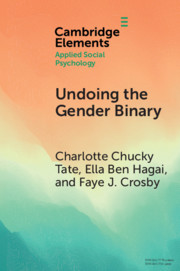Element contents
Undoing the Gender Binary
Published online by Cambridge University Press: 19 May 2020
Summary
- Type
- Element
- Information
- Online ISBN: 9781108584234Publisher: Cambridge University PressPrint publication: 04 June 2020
References
- 17
- Cited by



